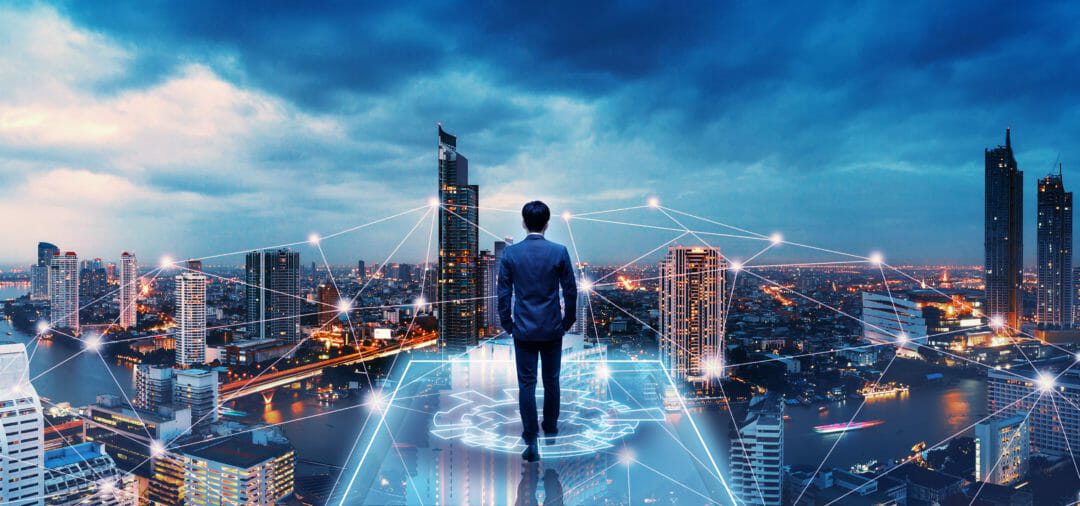As we start this new decade and reflect on what was, it is apparent that the Internet of Things (IoT) has yet to reach its full potential. The power of IoT lies in its ability to foster connectivity, drive collaboration and allow for in-depth information sharing to take place in real-time. When chief information officers (CIOs) solely focus on the connectivity and data that IoT brings, it isn’t seeing the bigger picture.
This year and beyond, to achieve a bolder vision centred on an advanced form of IoT, CIOs have a powerful role to play working with their C-Suite peers to transform their company’s core DNA, and in the process, change their own roles from cost-savers to revenue-generators. But they need to understand why strategic IoT programs that utilise intelligent systems and that act autonomously are so important for the future.
Augmenting IoT with automation and AI is where the real promise lies. This combination will take IoT, and the businesses that leverage it, into a new era of connected ecosystems. In this context, CIOs, are best equipped to lead the way, but they can’t do this work alone. They need to partner closely with stakeholders in the organisation as well as across the value chain to navigate an increasingly complex landscape, with the first port of call being developing a multi-year, structured plan that offers a clear path to success.
The CIO AI and data: How to use artificial intelligence and machine learning to make your data useful
This structure plan must encompass the following three principles:
• Boundaryless or extended enterprises: Embedding sensors in products can offer insights into product performance. But taking this to the next level requires breaking down enterprise silos to connect data from multiple organisational departments and even look beyond the boundaries of the enterprise to include players from across the value chain -partners, suppliers and customers. Through these connections, enterprises can unleash new business models and revenue streams, harnessing multiple value chains and cross-industry ecosystems aligned with their own business purpose.
• Pervasiveness: For future-ready ecosystems, decision making needs to be democratic, and as systems evolve, even automatic, backed by data-driven intelligence. From this perspective, owners of data will need to ensure they provide trust-based access across the ecosystem to overcome any lingering privacy concerns.
• Experience-rich: Looking beyond using data to simply track and manage products, companies need to harness the abundance of data to identify new opportunities. For instance, by leveraging product usage data, companies can discover and respond to evolving needs and preferences, and in the process, create new possibilities for ecosystem stakeholders.
As devices start communicating and collaborating, they will develop capabilities to “act intelligently,” moving the proverbial connected needle from self-aware to self-healing. Think of a smart factory. Increased connectivity and collaboration can help prevent collisions and reduce workplace accidents, improving worker safety. By setting a multi-year plan that drives toward “acting intelligently,” CIOs will unlock the latent, unexplored and limitless possibilities of IoT.
Processing IoT data at the edge: the right business decision
For one of the world’s largest shipyards, Damen Shipyards Group, IoT encompassed these elements and as well as being the foundation of the company’s strategic plan it also drove the company’s business purpose which was to improve safety, sustainability and efficiency with smarter, connected vessels.
Deploying an integrated IoT platform across its fleet of vessels and gathering the data, the company was able to use a single system to track vessels, manage their performance and also keep its suppliers informed about when a part or system was due for replacement. This resulted in suppliers being able to use a just-in-time service framework, which saved them money, allowed the vessels to be in service for longer, helped regulate the ship’s carbon footprint, and above all, helped goods get delivered to their destination faster. Due to their robust IoT platform, Damen made the strategic shift from ship builder to maritime solution provider, tapping new ecosystems and new avenues for growth.
For organisations to drive the next level of transformation, CIOs need to work on convincing the other members of the c-suite, and those connected with an organisation’s ecosystem, of the real-world potential of embracing IoT based, intelligent solutions.
By augmenting the physical with human, cognitive and digital intelligence, enterprises will this year maximise their IoT investments to create powerful ecosystems, build new business models and deliver positive outcomes for their customers, employees, partners.
Ultimately, CIOs can’t be afraid to be bold and to expect more from IoT. The possibilities for transformation with IoT are truly limitless for companies today — the key to success is a strategic plan for bringing life to things.











